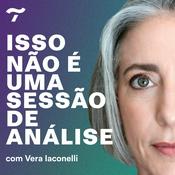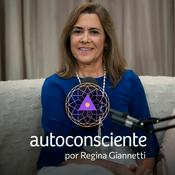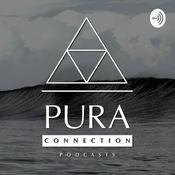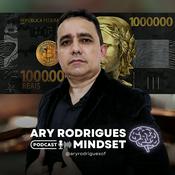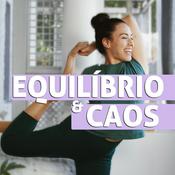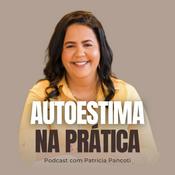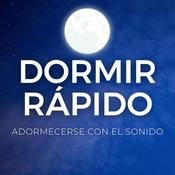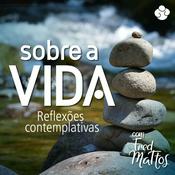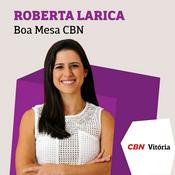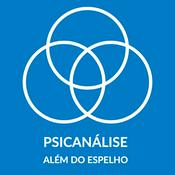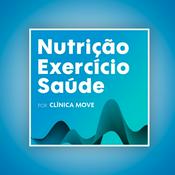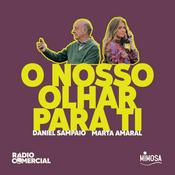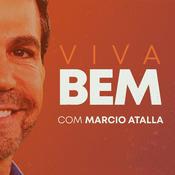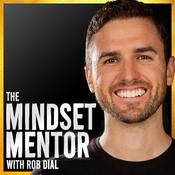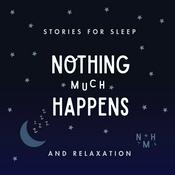Movement Logic: Strong Opinions, Loosely Held
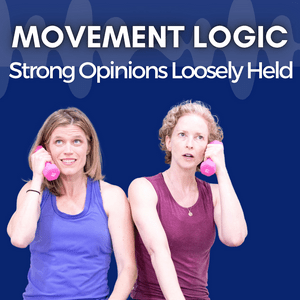
119 episódios

119: Testosterone in Menopause: What We Know, What We Don't
24/12/2025 | 25min
Testosterone is everywhere in menopause conversations right now, often framed as a solution for everything from low energy and brain fog to bone health and longevity. In this episode, Dr. Sarah Court breaks down what actually matters when it comes to testosterone for menopausal women, separating social media hype from clinical evidence. The real questions are not whether women have testosterone or whether levels change with age, but whether testosterone should be prescribed, for whom, and what the data truly supports.Using current consensus guidelines, this episode explains why testosterone has one narrow, evidence-based indication, hypoactive sexual desire disorder, and why claims about mood, energy, cognition, bone health, and longevity are not supported by high-quality research. Dr. Court also walks through how testosterone is prescribed in the real world, why the lack of FDA-approved products for women creates problems, and what the safety data does and does not tell us about long-term risks. If you have heard confident claims about testosterone as a menopause cure-all, this episode provides the context you need to evaluate those messages with clarity and skepticism.FOLLOW @MovementLogicTutorials on InstagramMovement Logic: Free Barbell Mini CourseInstagram: Professor Susan DavisInstagram: Dr. Kelly CaspersonGlobal Consensus Position Statement on the Use of Testosterone Therapy for Women — Davis et al., 2019, Journal of Clinical Endocrinology & MetabolismISSWSH Clinical Practice Guideline on Systemic Testosterone for Women — Parish et al., 2021Testosterone Therapy for Women, Systematic Review & Meta-analysis(Lancet Review) — Islam et al., 2019Androgen Therapy in Women, A Reappraisal — Davis & Wahlin-Jacobsen, 2015Kelly Casperson blog post — Testosterone Can Help With Libido, Energy, Focus, & More During MenopauseYou Are Not Broken Podcast — Kelly Casperson, MDYouTube Short: Testosterone and Bone HealthYouTube Short: Testosterone, Motivation & Vitality

118: How Should We Eat To Be Healthy? With Abby Langer, RD
10/12/2025 | 1h 1min
In this episode of the Movement Logic Podcast, Laurel and Sarah talk with registered dietitian and longtime myth buster Abby Langer, RD, about what it actually means to eat in a healthy, sustainable way. Abby brings clarity to some of the most confusing and overhyped nutrition messages online, explaining the meaningful difference between dietitians and nutritionists, why food guidelines get so much misplaced blame, and why simple habits like eating more fiber, plants, and whole foods still matter far more than clean eating, hormone-balancing diets, or supplement-driven solutions. She breaks down ultra processed foods, weight gain misconceptions, what causes overeating, and why carbs, fruit, sugar, and seed oils have all become targets of unnecessary fear.The conversation also explores protein needs, plant versus animal protein, the role of fiber in digestion and satiety, what gut health is and isn’t, and why probiotic claims are often overstated. Abby shares how her decades of experience in hospitals, primary care, and private practice have shaped her evidence-based approach, and she offers grounded advice on how to build a sane, less anxious relationship with food in a culture that thrives on extremes.SIGN UP for our FREE Barbell Mini CourseFOLLOW @MovementLogicTutorials on InstagramRESOURCESabbylangernutrition.comSubstack: Bite MeInstagram: @abbylanger

117: DEXA vs REMS: What's the Difference?
26/11/2025 | 30min
In this episode of the Movement Logic Podcast, Sarah discusses two primary methods for measuring bone density: DEXA (Dual-Energy X-ray Absorptiometry) and REMS (Radiofrequency Echographic Multi-Spectrometry). The episode explains what each method measures, their technologies, reliability, and practical applications. It compares their availability, cost, accuracy, and limitations. DEXA is recognized as the clinical gold standard but has some limitations, while REMS, although newer, shows promise with advantages in certain clinical situations.Movement Logic Site Wide Sale now on!Follow Movement Logic on InstagramReferences:77: Are You Getting DEXA Scammed?FRAX toolBest Practices for Dual-Energy X-ray Absorptiometry Measurement and ReportingNew technology REMS for bone evaluationCould radiofrequency echographic multispectrometry (REMS) overcome the overestimation in BMD by dual-energy X-ray absorptiometry (DXA) at the lumbar spine?DXA beyond bone mineral density and the REMS techniqueCost-effectiveness of radiofrequency echographic multi-spectrometry for the diagnosis of osteoporosis in the United States

116: Coaching Strength, Building Character with James Lederach, MS, CSCS
12/11/2025 | 1h 14min
In this episode of the Movement Logic Podcast, Laurel Beversdorf talks with strength coach James Lederach, MS, CSCS, about the deeper side of coaching and how helping someone get stronger often means helping them grow as a person. Together, they explore the benefits of strength development for adults and kids, training that supports rather than interferes with sport, the downsides of early sport specialization in youth, and the broader life lessons that strength training offers beyond physical health and performance.James and Laurel reflect on how training develops resilience, self-reliance, and emotional steadiness for both kids and adults. They discuss how good coaching balances structure with empathy, how strength training teaches self-trust, and why the most meaningful outcomes of training have less to do with performance and more to do with who we become through the process.SITE WIDE SALE — Save $$ on our Movement Logic TutorialsFOLLOW @MovementLogicTutorials on InstagramRESOURCESBell, 2018; PMID: 30135085DiFiori, 2014; PMID: 24463910Post, 2017; PMID: 28288281Post, 2016; PMID: 27807260VISIT James Lederach's Gym Heavy Athletics FOLLOW @james_lederach on Instagram

115: How to Get Abs
29/10/2025 | 1h 58min
In this episode of the Movement Logic Podcast, Laurel Beversdorf and Dr. Sarah Court examine the enduring myths and misinformation around the aesthetic goal of “getting abs.” They analyze the anatomy and function of the abdominal muscles, the cultural evolution of ab training versus core strength and stability training, and the role mechanical tension, muscle length, and training volume play in hypertrophy (muscle growth). Additionally, they discuss how pursuing the aesthetic goal of "getting abs" is different from performance goals related to abdominal strength.The hosts unpack popular misconceptions, such as “abs are made in the kitchen,” or that body composition changes work differently for women than men, or that core stability means never moving your spine. They contrast these myths with what current research on energy balance and hypertrophy training show. They also trace how Pilates, physical therapy, and social media helped shape the modern core strength and stability narrative—one that, in some circles, shifted from building strength through movement to “protecting” the lumbar spine by avoiding it.Additionally, this episode aims to clarify all of the factors that influence the appearance of the abdominal region, and how gendered, moralized, and shame-based messaging about the midsection continues to distort public understanding of exercise and body image.CART CLOSES Nov 1st for Lift for Longevity—SIGN UPFOLLOW @MovementLogicTutorials on InstagramRESOURCESClip: Mel Robbing Podcast interview with Stacy Sims about abs67: Popular Explanations for SI Joint Pain are Wrong, Says Science78: Behemoth Knee Myths20: Pelvic Floor In-Depth with Stephanie Prendergast, MPT54: Alignment Dogma - Spine58: Alignment Dogma - Shoulders48: Alignment Dogma - Pelvis80: Posture Panic Pt. 3 with Author Dr. Beth Linker, PhD50: Bracing versus BreathingSlouch: Posture Panic in Modern America, by Beth LinkerGHD Sit-UpHodges, 2001; PMID: 11181617Kalantari, 2024; PMID: 38565979Brown, 2011; PMID: 21325932Cholewicki, 1999; PMID: 10521659
Mais podcasts de Saúde e fitness
Podcasts em tendência em Saúde e fitness
Sobre Movement Logic: Strong Opinions, Loosely Held
Ouça Movement Logic: Strong Opinions, Loosely Held, Lutz Podcast e muitos outros podcasts de todo o mundo com o aplicativo o radio.net

Obtenha o aplicativo gratuito radio.net
- Guardar rádios e podcasts favoritos
- Transmissão via Wi-Fi ou Bluetooth
- Carplay & Android Audo compatìvel
- E ainda mais funções
Obtenha o aplicativo gratuito radio.net
- Guardar rádios e podcasts favoritos
- Transmissão via Wi-Fi ou Bluetooth
- Carplay & Android Audo compatìvel
- E ainda mais funções


Movement Logic: Strong Opinions, Loosely Held
baixe o aplicativo,
ouça.






